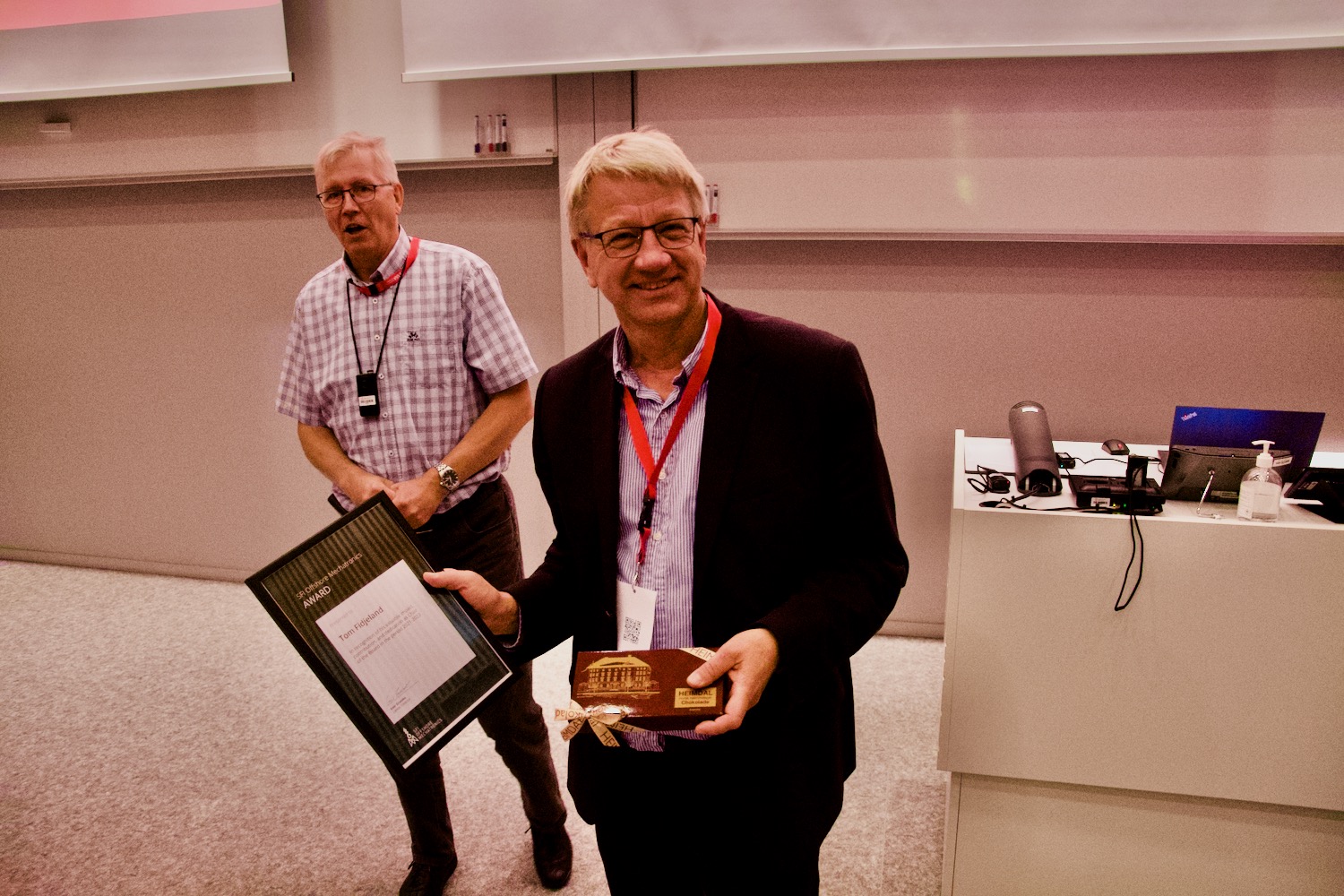At the final annual conference for the NOK 215 million research program in Grimstad this week, the 8-year long SFI period was summarized and celebrated.
“SFI Offshore Mechatronics has been important for sustaining competitiveness of the suppliers in our region, by adding new products and services, expanding the knowledge base, and structuring research efforts within the companies,” says Tom Fidjeland, CEO of GCE NODE and Chairman of the Board of Directors of SFI Offshore Mechatronics.
Initiated by the University of Agder and GCE NODE, the SFI include academic partners NORCE, the Norwegian University of Science and Technology, RWTH Aachen, and Aalborg University. Among the twelve industrial partners are the largest companies in the GCE NODE cluster; NOV, HMH, SLB, and MacGregor.
NEW PRODUCTS
Hugo Rosano, Senior R&D Manager for the Offshore Solutions Division at MacGregor, showed two products developed during the SFI period; A robotic arm for mooring of autonomous vessel Yara Birkeland, and a motion compensated pile gripper for installation of wind turbines.
“Being part of SFI Offshore Mechatronics has accelerated research and development in our division of MacGregor. We have adopted tools, engineering strategies, and standard procedures and processes that originate from the SFI,” says Rosano.
Harald Langenes, Business Domain Expert at SLB Kristiansand (Cameron Sense), explained how SLB has worked within the SFI to optimize maintenance, reduce downtime, and prolong asset lifespan.
“We would like to do maintenance at the right time and not at a scheduled time. Through the SFI we have improved our ability to understand an asset’s lifespan. For one asset, calculations showed that for the first 203 days of operation the remaining useful life had only been reduced by 9.9 days,” says Langenes.
32 PHDS, 8 POST DOCS
During its eight years of operation and a total of 42 work packages, SFI Offshore Mechatronics has contributed to excelling research and development efforts in the consortium companies. It has increased the knowledge base, produced 32 PhDs and 8 Post Docs, and contributed to innovation and new products and services.
“It has been great to be a part of the SFI Offshore Mechatronics. The center had brought a lot of results, good ideas, and things to build on. All in all: A great experience!” says Peder Sletferding, Technical Manager Robotic Systems at NOV.
Both NOV and HMH, as main competitors, agree that cooperation through the SFI brought some challenges.
“At some point, cooperation meets competition. I think we both held back and did not openly share data and knowledge. This will of course hamper the speed of innovation, but it is necessary in a professional, competitive environment,” says Sjur Henning Hollekim, DLS Strategy & Operations at HMH and Member of the SFI Steering Board.
“That said, it has been important and useful to be part of the SFI. The program put Agder on the map for mechatronics, and the academic network is also valuable to us”, says Hollekim.
POWERFUL INSTRUMENT
Sunniva Whittaker, Rector of the University of Agder, says: “SFI Offshore Mechatronics has been a very powerful instrument within R&D and therefore important for the university’s mission. I would like to thank all the companies in the region that have given their support to the SFI in challenging and difficult times.”
Center Director, Professor Geir Grasmo, says the center has delivered according to its vision, project description and work plans.
“We intend to keep the momentum on RD&I and promote interaction between industry and research partners,” says Grasmo.
The research-based center was funded by The Research Council of Norway and consortium partners. It consisted of seven main work packages:
- Drives
- Motion Compensation
- Robotics and Autonomy
- Modelling and Simulation
- Monitoring Techniques
- Data Analysis, IT integration and Big Data
- Technology Vision



